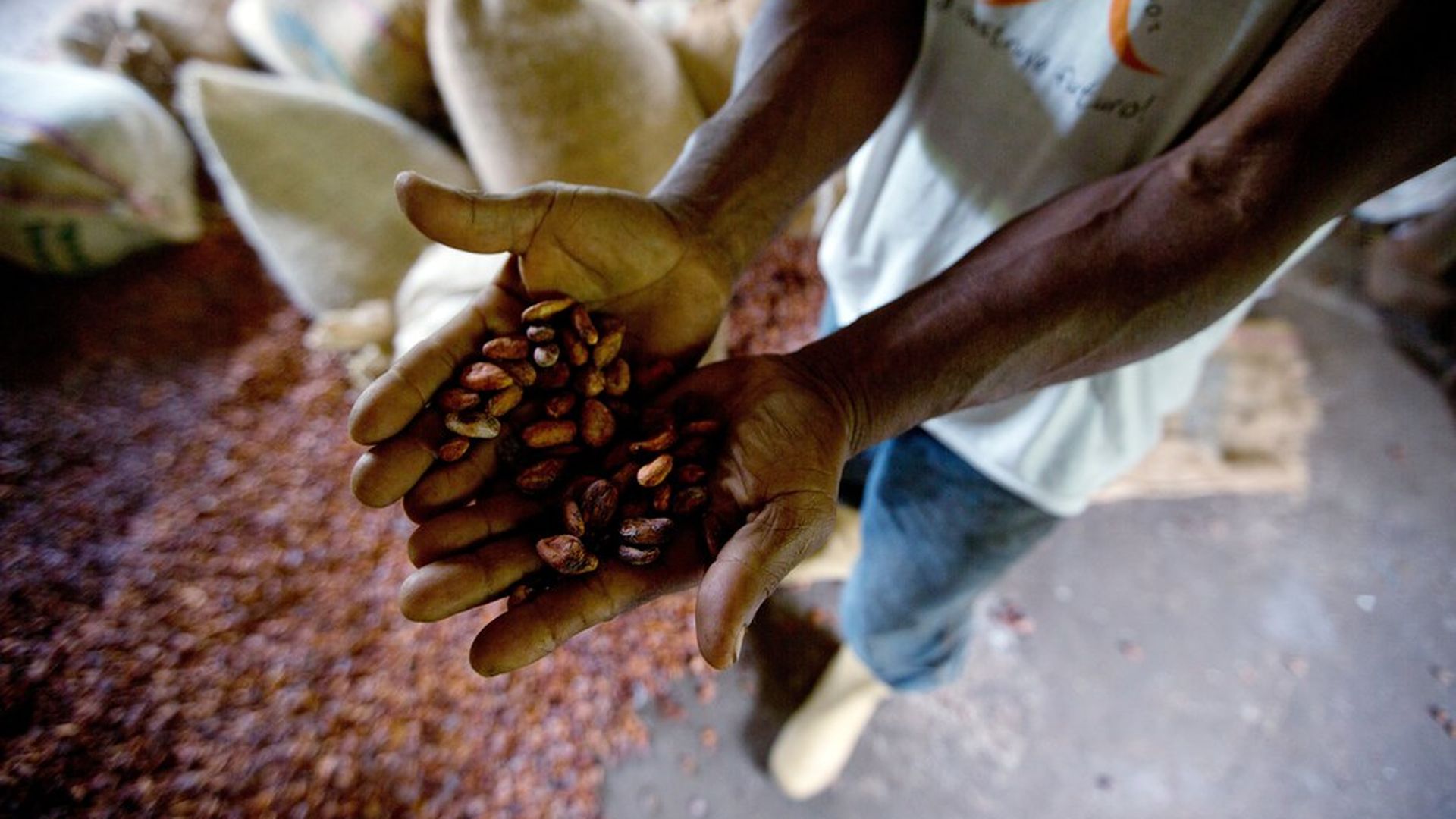
A worker holds a handful of dry cacao beans ready to sell at the Agropampatar chocolate farm Co-op in El Clavo, Venezuela. Photo: Fernando Llano / AP
Around the world, there is a wide variety of trees bearing cacao pods of different sizes, shapes and colors that can be used to produce chocolate. But as The New York Times' Myles Karp explains, only a few cacao types are broadly cultivated, which narrows the gene pool and puts the crop at risk for disease and environmental changes.
Why it matters: These challenges have made cacao less attractive to producers even though demand for chocolate is increasing — that could mean a shortage in the future.
The threats
- One of the greatest threats to cacao is the development of a fuzzy white fungal coating, called monilia or frosty pod rot. The fungus spread across Costa Rica during the 1980s, and eventually led exports of cacao beans to plummet 96%.
- "For me, the cacao industry is in permanent risk, because intentionally or unintentionally this disease could be spread in just one flight," said Wilbert Phillips-Mora, head of the Cacao Genetic Improvement Program at C.A.T.I.E. He added that the uptick in global travel and commerce in the developing world has created new avenues for infection.
- Climate change could affect the ability of plant pathogens to infect plants and make plants more susceptible to infection.
A potential solution
- Phillips-Mora studied the "most naturally tolerant and productive cacao trees" in the early 1980s, and by 2006 found a way to breed 6 hybrid cacao trees that on average produce about 3 times more than the standard types.
- One of his hybrids, called C.A.T.I.E.-R6 experiences roughly a 5% frosty pod rot infection rate, compared to 75% for a control variety. C.A.T.I.E. hybrids are now grown in all of Central America, as well as in Mexico and Brazil.
- The silver lining: "Whatever fungal mutation may arise, wherever drought may strike, however chocolate tastes may change — there will likely be cacao genes somewhere in the collection that can form the basis of new hybrids to meet future challenges," writes Karp.
